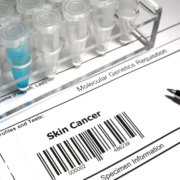An Expert’s View on Promising CLL Approaches
An Expert’s View on Promising CLL Approaches from Patient Empowerment Network on Vimeo.
As chronic lymphocytic leukemia (CLL) research continues to expand, new and promising treatment approaches have emerged. Dr. Anthony Mato shares information on developing therapies, including inhibitor, immunotherapy, and antibody options.
Dr. Anthony Mato is Director of the CLL Program at Memorial Sloan Kettering Cancer Center. Learn more here.
See More From The Pro-Active CLL Patient Toolkit
Related Resources

|

|

|
Transcript:
Katherine:
Let’s get into developing research. Let’s get into developing research and what it can mean for patients. What new approaches are showing promise?
Dr. Mato:
Wow, that’s a loaded question, because there are so many possible answers. There are new versions of the current standards of care, different classes like BTK inhibitors or PI3K inhibitors which have the potential to be very active but better tolerated.
So, that’s one big group of new agents in development. There are several agents in development that appear to be effective in the setting of resistance to the current standards of care. There are classes of immunotherapies that allow us in different ways to use the immune system of the patient to fight cancer directly, so not necessarily targeting the cancer cell but targeting the immune system to make it do its job to filter out the cancer.
There are new antibodies in development. And that’s just a little slice of what’s in development for CLL and new combinations of course of the current standards of care which when put together could be even more effective. So –
Katherine:
What about – oh, go –
Dr. Mato:
Sorry. I was just going to add that so many different possibilities available that not every center can participate in all of these types of research, but it’s amazing for patients to know how many different new options are in development that maybe even better than the current approaches.
Katherine:
Right. What kind of side effects might be involved with the emerging treatments? What might people expect?
Dr. Mato:
That’s a hard question to answer, because the purpose of the clinical research is to help define the side effects associated with these newer drugs. And so, while we have a hint from early data or from Phase I data what a side effect profile might look like for a new drug, part of the consenting process is to help gather information not only about a drug’s activity but also about its side effect profile.
So, when we consent a patient, there is a little bit of an unknown about side effects, and we have sometimes very limited information that we can share about the activity. So, it’s not easy to just group these together and say these are the newest side effects to worry about. That’s really the purpose of the studies that I’m mentioning and the general idea of clinical research.
Katherine:
And that makes sense. How is research into the genetics of CLL providing a better understanding of how a patient’s individual disease may behave?
Dr. Mato:
Well, just a few years ago, the basic genetic studies for CLL included just a few chromosomal markers that we could easily or sometimes not so easily test. At our center, for example, and it’s not unique, we’ll be able to look at the over 400 different mutations associated with hematologic malignancies. The more information we get, the more we realize that although under the microscope a CLL cell may look like another CLL cell, biologically, they’re very different.
They’re driven by different genetic mutations, and knowledge of those pathways that are important for an individual CLL will oftentimes, will hopefully in the future guide how therapy is selected for patients.










